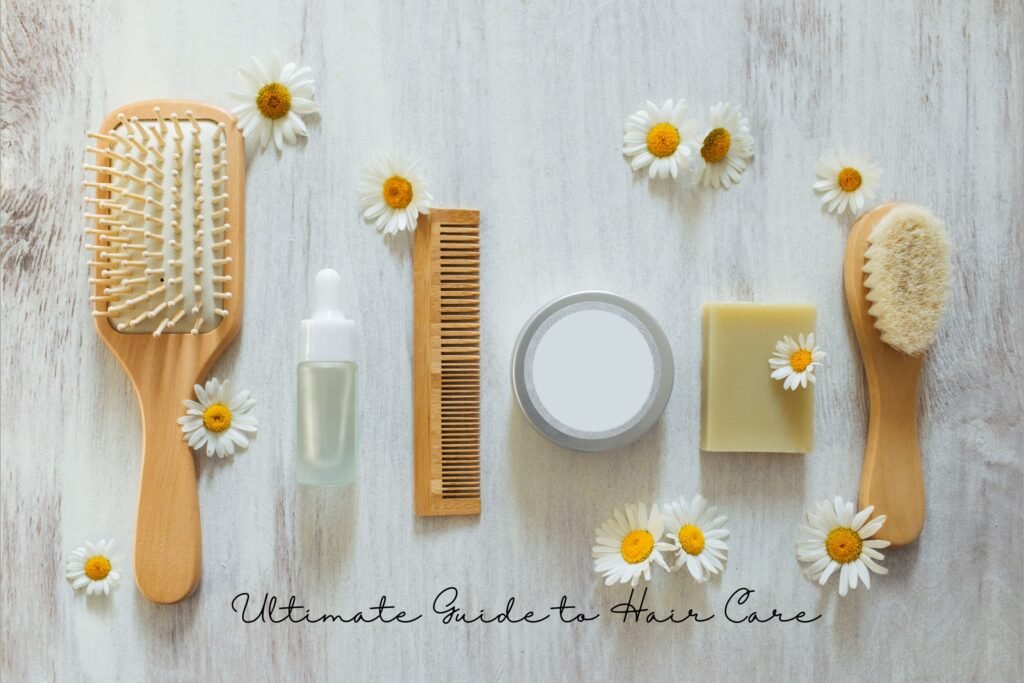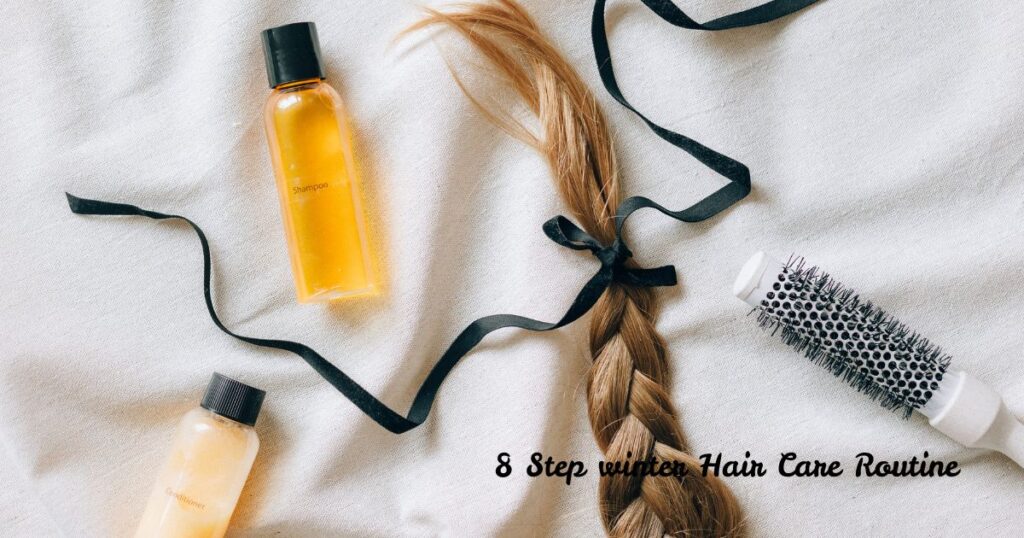We all dream of having manageable, glossy, and healthy hair, but good genes alone aren’t enough to achieve it. It takes the right products, a consistent hair care routine and a few healthy habits. In my experience, making small changes to my routine has made a world of difference in how my hair feels and looks. In this guide, I will walk you through the essential steps of hair care, from choosing the right shampoo to protecting your hair from damage, so you can enjoy the healthy, beautiful hair you deserve.
Understand Your Hair Type
Before starting any hair care routine, it’s essential to understand your hair type. Over the years, I’ve realized this step makes all the difference. Hair can be categorized into four main types:
-
Straight Hair: Typically shiny because natural oils travel easily down the hair shaft. Straight hair can get oily quickly, so I learned to wash it less frequently and use dry shampoo in between.
-
Wavy Hair: Falls between straight and curly. Wavy hair is prone to frizz and needs a balance of moisture and control. I found that a good leave-in conditioner and curl cream helps keep my waves defined and frizz-free.
-
Curly Hair: Needs extra moisture to define curls and reduce frizz. I used to skip conditioning, but once I started using a curl-specific conditioner and deep-conditioning masks, my curls became more defined and manageable.
-
Coily Hair: Very tight curls that need intense moisture and gentle handling. I discovered that coily hair thrives with heavier, richer products and oils like argan to lock in moisture.
Understanding your hair type helps you select the right products and treatments. Once I started catering my routine to my hair’s unique needs, I saw a noticeable improvement in texture and overall health.
Pro Tip: Understanding your hair type helps you choose the right products. If your hair feels dry, it likely needs more moisture (ideal for curly or coily hair). If it gets greasy quickly, opt for lightweight products (better for straight hair). Tailoring your routine to your hair type will make a big difference in its health and appearance.
Choose the Right Shampoo and Conditioner
Shampoo I’ve found that sulfate-free shampoos are a lifesaver, especially for dry or curly hair. They don’t strip natural oils, leaving my hair softer and more hydrated. When choosing a shampoo, look for ingredients that match your hair’s needs. For dry hair, moisturizing agents like glycerin work wonders, while oily hair can benefit from clarifying shampoos with ingredients like tea tree oil.
Conditioner I never skip conditioner; it is key to keeping hair soft and hydrated. For dry or damaged hair, I recommend using a deep conditioning treatment once a week. It makes a huge difference in improving texture and reducing breakage. Always focus conditioner on the ends to prevent the scalp from becoming weighed down.

Wash Your Hair Properly
Wash your hair as often as needed based on your hair type and lifestyle. Oily hair may require daily washing to remove excess oil, while dry hair may only need washing a few times a week to preserve natural moisture. Always use lukewarm water, as hot water can strip your hair of its natural oils, leaving it dry and brittle. Gently massage your scalp with your fingertips to stimulate blood flow and promote healthy hair growth. Avoid using your nails or being too rough, as this can lead to irritation, breakage, or damage to the hair follicles. For best results, follow up with a conditioner suited to your hair type to lock in moisture and keep your hair soft and manageable.
Drying Your Hair
After washing your hair, gently squeeze out excess water using a microfiber towel or a soft t-shirt. This method helps reduce frizz and prevents breakage. I personally noticed a huge difference in the texture of my hair after switching to a microfiber towel. Whenever possible, allow your hair to air dry, as this is the gentlest method for maintaining its natural texture and moisture. If you must use a blow dryer, always apply a heat protectant and set the dryer to a low heat setting. Over time, I’ve found that blow-drying on low heat not only prevents damage but also gives my hair a more natural, voluminous look.
Brushing and Styling
When your hair is wet, use a wide-tooth comb to gently detangle it. This minimizes breakage and keeps your strands healthy. I used to tug at my hair with a regular brush when it was wet, and I noticed a lot of hair breakage. Now, I always use a wide-tooth comb, and my hair feels stronger. Once your hair is dry, use a brush that’s suited to your hair type. Always start from the ends and work your way up to avoid tangling and unnecessary strain on your strands. It took me a while to stop using heat styling tools every day, but now I limit their use, which has really improved my hair’s health. When I do style my hair with heat, I make sure to apply a heat protectant spray first. I’ve found that this simple step has significantly reduced the damage, especially to the tips of my hair.
Also, adding the right hair accessories can elevate your hairstyle while protecting your hair. From stylish hair clips to soft scrunchies, accessories can help prevent damage and enhance your look without causing unnecessary breakage. I recently wrote a post on Hair Accessories You Need for Beautiful Hair, where I shared some of my favorite pieces that not only add a touch of flair but also work to maintain the health of your hair. Incorporating these accessories into your routine can give your hair a break from constant heat styling and improve its overall look.
Pro Tip: For extra smoothness, consider investing in a boar bristle brush for dry hair. It helps distribute your scalp’s natural oils, adding shine without the need for extra product. Also, try using a leave-in conditioner or a detangling spray before brushing wet hair to make the process smoother and reduce friction.
Protect Your Hair
Wear a hat or use hair products with UV protection when you’re in the sun for extended periods. Sun exposure can dry out hair and cause color fading, especially for dyed hair. Additionally, always rinse your hair with fresh water before and after swimming in a pool or the ocean to prevent damage from chlorine and salt.
Nourish from the Inside Out
Drink plenty of water to keep your hair hydrated from the inside out. Hydration is essential for maintaining healthy, shiny hair. Eat a balanced diet rich in vitamins and minerals, particularly iron, zinc, omega-3 fatty acids, and vitamins A, C, and E. These nutrients promote hair growth and overall hair health.
Pro Tip: Consider adding a biotin supplement or a collagen drink to support hair growth and strength.
Regular Trims
Getting regular trims every 6-8 weeks helps prevent split ends and keeps your hair looking healthy and fresh. Regular trims also prevent hair from becoming overly damaged and promote stronger growth.
Avoid Overprocessing
Chemical treatments like coloring, perming, and relaxing can damage your hair over time. Try to limit these processes to avoid weakening your hair. If you do undergo chemical treatments, always follow up with deep conditioning treatments to restore moisture and nourish your strands.
Look for Signs
Lastly, pay attention to your hair’s needs. If your hair feels dry, incorporate more moisturizing products like oils or hydrating masks into your routine. If it’s oily, cut back on heavy conditioners and opt for a clarifying shampoo to remove excess buildup.
Pro Tip: If your hair is feeling particularly weighed down or greasy, try washing with a gentle sulfate-free shampoo to restore balance without stripping your scalp’s natural oils.
Product Comparison: Shampoo
Olaplex No. 4 Bond Maintenance Shampoo
- Free from parabens and sulfates
- Anti-frizz
- Damage control
- All types of hair
Customer saying a game changer for them and others says a little goes a lot. Price is 32$.
They have their own patented ingredients which helps to repair broken hair. They also use rosemary extract and sunflower seed oil that nourishes the hair.
Native Shampoo and Conditioner
- Suits curly hair
- Prevents build up
- whole set comes at 19.94$
- All types of hair
Customers with oily hair are finding it quite scalp friendly as it does not irritate the scalp also has hydrating effect.
Its almond and shea butter provides the rich fragrance and also it is cruelty free.
OGX Thick & Full + Biotin & Collagen Volumizing Shampoo
- 6.97$
- Has Vitamin B
- Voluminizing effect
- Frizz free
Customers are happy about the fact that this shampoo makes their hair shiny without weighing it down also increases the volume of hair. Some of they don’t need conditioner afterwards!
Aveeno Farm-Fresh Oat Milk Sulfate-Free Shampoo
- Paraben free
- Safe for colored hair
- Rich scent comes from oat milk, coconut
- Paraben free
- 7.98$, which is economical
- For all types of hair
Customers with sensitive to dry scalp are loving also it helps to maintain the dandruff. It also works really nice for oily scalp type.
If you are just starting your hair care and don,t know much, you can use aveeno shampoo. This will act as a beginner friendly shampoo without much effort.
How to Have Frizz Free Hair
Suffering from frizzy hair means your hair is damaged and lost its moisture. Generally frizzy hair indicates that you don’t put much effort to your hair and want it to be nice and shiny. But it doesn’t work like that. If you want your hair to look beautiful throughout the day them you must take good care of it. Some practices which might be able to lessen the frizziness
- Don’t overwash
- Use leave on conditioner
- Use nutrient rich shampoo
- Use heat protectant
- Prefer air drying after wash
Products
The Honest Company Conditioning Hair Detangler
- Fortified with nutrients
- No toxicological effects
- Can be used in sensitive scalp type
Customers are claiming it as a life save from matte hair knot disasters. It does not provide a long term hydration. Customers are also fearing that it might leave some residue on the hair.
milk_shake Leave-In Conditioner Spray Detangler for Natural Hair
- Can be used in colored hair
- Suits all types of hair
- Reduce split ends appearance
Works as detangler gennie without even brushing. Customers are saying that it does its job well. People with sensitive scalp also find it useful.
By following these tips and maintaining a consistent hair care routine, you’ll be well on your way to achieving the healthy, shiny hair you’ve always dreamed of. Remember, healthy hair doesn’t happen overnight; it’s the result of dedication and the right habits. Treat your hair with the care and respect it deserves by nourishing it from the inside out, protecting it from damage, and using the right products for your unique hair type. If you haven’t already, understanding your scalp type is also crucial for customizing your hair care routine. Check out How to Determine Your Scalp Type for more information. With a little patience and consistency, you’ll enjoy beautiful, strong hair that radiates health and vitality every day!



